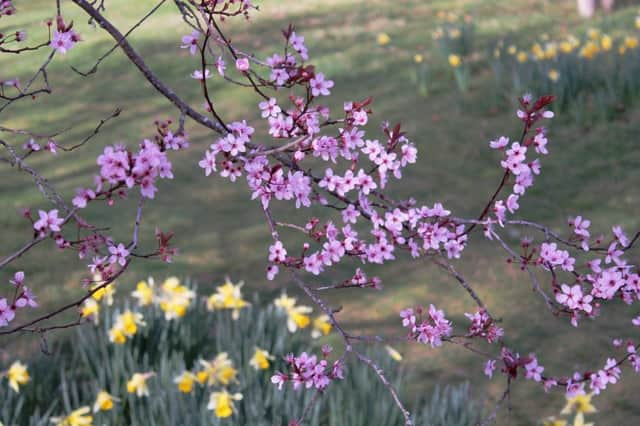Gardening: Brightness falls


True, most gardeners prefer to call it the purple-leaved plum, a tidy tree that, after 20 years, will probably be nearly 20ft tall – so it’s not the ideal choice for a constricted site.
Several years ago, gardening guru Monty Don admitted that Prunus cerasifera pissardii wasn’t one of his favourites because the purple leaves go a heavy brown by mid-summer. He opted for the cultivar Prunus cerasifera “Nigra”, which has darker foliage and almost black shoots.
Advertisement
Hide AdAdvertisement
Hide AdNevertheless, the purple-leaved plum has found a place in the hearts of many because it’s quite tough, accommodating and reliable – and it has very pretty, delicate flowers, that dark purple foliage and plum-like fruits in the autumn.
This is a tree that does well in any reasonably fertile soil, in sun or partial shade and tolerates cold exposed locations, but it’s best to avoid very wet conditions. It requires no pruning to form a good shape, making it a great specimen tree.
It will never take the nation’s heart by storm; that has been done already by other members of the many-branched Prunus family, notably the exotic Japanese ornamental cherries that are right now making their mark with over-the-top shows of blooms.
They are stunning until the wind and rain batter them into submission, leaving their owners to yearn for a longer flowering season and for trees with better-behaved roots.
Advertisement
Hide AdAdvertisement
Hide AdWe learn with experience – while many of these trees are masterpieces of colour, their roots can have a nasty habit of creeping along just below the soil surface, wreaking havoc on paths and lawns.
Still, you can’t have everything, and before that annual bitter blow, the Japanese can be joys to behold – at least for a couple of weeks.
Of particular note is another wonderfully-named variety, Prunus “Kiku-shidare zakura”, one of the best ornamental cherries for the smaller garden; in fact, many consider it the finest weeping variety. In April, it bursts out in a mass of double, rose-pink flowers. Its cousin P “Amanogawa” is a close rival, but displays its charms as a column of shell-pink blooms.
However, the most popular is P “Kanzan”, the gaudiest of them all, with purple-pink flowers. In this case, big is certainly best.